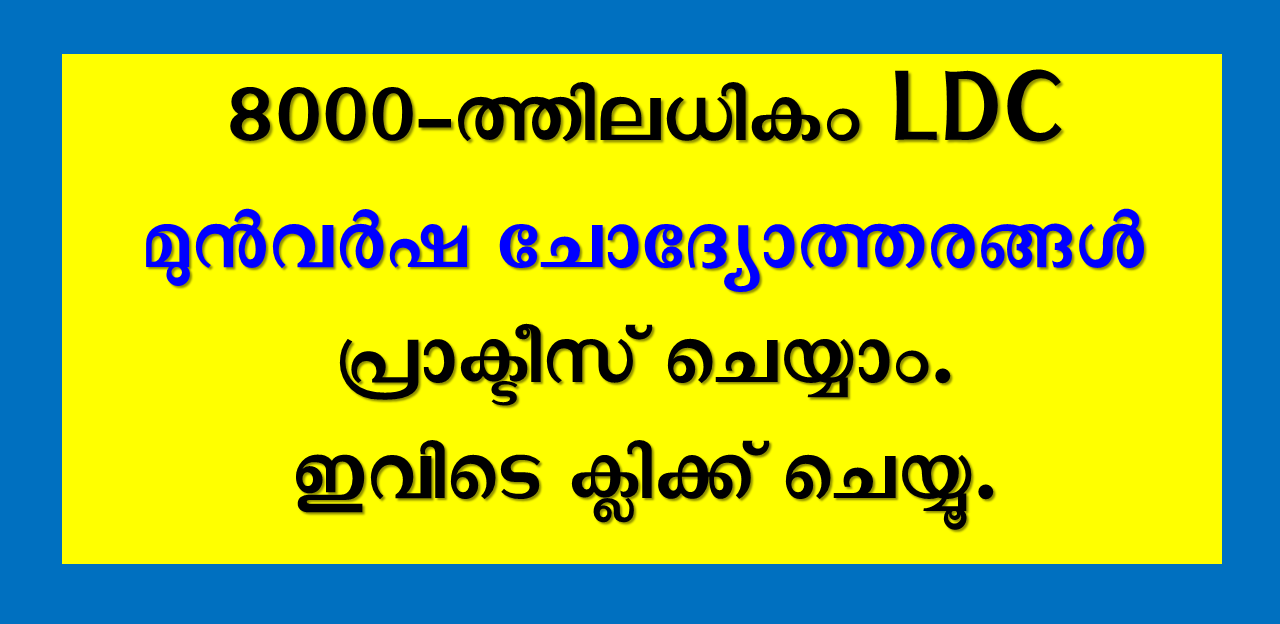PSC Assistant Engineer Civil (KSEB) Model Questions & Answers
PSC Assistant Engineer Civil – Kerala State Road Transport Corporation Model Questions and Answers: Here are the model questions and answers for Assistant Engineer Civil (KSEB) PSC examination. These are the previous asked questions for the PSC Assistant Engineer Civil (KSEB) Examination.
PSC Assistant Engineer Civil (KSEB) Model Questions & Answers
Question Paper Code: 144/2013
Category Code: 139/2012
Exam: Assistant Engineer (Civil) SR from SC/ST Only
Department: KERALA STATE ROAD TRANSPORT CORPORATION
Date of Test: 07-09-2013
These are the model questions and answers for the Assistant Civil Engineer KSEB PSC examination.
1. The terminal velocity of a small sphere settling in a viscous fluid varies as the
(A) Inverse square of diameter (B) Inverse of diameter
(C) first power of its diameter (D) inverse of fluid viscosity
Answer: D
2. A cement bag contains 0.035 cubic meter of cement by volume. How many bags will one tonne of cement comprises
(A) 16 (B) 17
(C) 18 (D) 20
Answer: D
3. Efflorescence of bricks is due to
(A) Soluble salts present in clay for making bricks
(B) High Porosity of bricks
(C) High Silt Content in the soil used
(D) Excessive burning burning of bricks
Answer: A
4. Which of the following constituent in earth gives plasticity to mould bricks in suitable shape
(A) Silica (B) Lime
(C) Alumina (D) Magnesia
Answer: C
5. The compound which contributes the highest share of heat of hydration in cement is
(A) Tricalcium Silicate (B) Tricalcium aluminate
(C) Gypsum (D) Combined lime
Answer: B
6. Putty is made up of:
(A) White lead and turpentine
(B) Powdered chalk and raw linseed oil
(C) Red lead and linseed oil
(D) Zinc oxide and boiled linseed oil
Answer: B
7. In making Concrete ,maximum density is achieved by,
(A) Using sufficient cement to fill all the voids
(B) Controlling the particle size of the ingredient
(C) Controlling the particle size distribution of the ingredient
(D) Reducing the quantity of mixing water
Answer: C
8. which one of the following is not a vehicle in paints
(A) Nut oil (B) Poppy oil
(C) Tung oil (D) Turpentine oil
Answer: D
9. In high tensile steel carbon should be less than
(A) 0.10% (B) 0.15 %
(C) 0.70 % (D) 1.5%
Answer: B
10. The head room for a staircase should not be less than
(A) 3.50m (B) 3m
(C) 2.10m (D) 2m
Answer: C
11. The ratio of cement mortar preferred in load bearing walls in brick masonry is
(A) 1:2 (B) 1: 6
(C) 1:8 (D) 1:12
Answer: B
12. A curtain wall carries
(A) wind load (B) Self weight
(C) roof load (D) no load
Answer: B
13. In ordinary residential and public buildings ,the DPC is provided at
(A) Plinth level (B) Ground level
(C) roof level (D) lintel level
Answer: A
14. Laterite is a
(A) argillaceous rock (B) silicious rock
(C) calcarious rock (D) magma
Answer: A
15. Marble is
(A) Igneous rock (B) metamorphic rock
(C) stratified rock (D) sedimentary rock
Answer: B
16. In any case the bearing of lintel should not be less than
(A) 100 mm (B) 150 mm
(C) 200 mm (D) 300 mm
Answer: B
17. The resultant of two equal forces(F) acting in opposite directions will be
(A) 2 F (B) √2 F
(C) 0.707 F (D) zero
Answer: D
18. The set of forces ,whose resultant is zero, are known as
(A) equilibrium forces (B) collinear forces
(C) coplanar forces (D) concurrent forces
Answer: A
19. The centre of gravity of a plane lamina is not at its geometrical centre if it is a
(A) Circle (B) square
(C) rectangle (D) right angled triangle
Answer: D
20. A system of coplanar forces is in equilibrium when
(A) force polygon closes
(B) funicular polygon closes
(C) both force and funicular polygon closes
(D) all the forces are coplanar concurrent
Answer: C
21. The diagram showing the point of application and line of action of forces in their plane is called
(A) Vector diagram (B) space diagram
(C) force diagram (D) funicular diagram
Answer: B
22. The specification of earth work in foundation trenches, drains etc. Lift ordinarly specified is
(A) 0m (B) 1.50 m
(C) 5 m (D) 3m
Answer: B
23. In analysis of rates contractors profit is taken at the rate of
(A) 1% (B) 5%
(C) 10% (D) 20%
Answer: C
24. One cubic metre of cement concrete (1:2:4) is to be mixed by volume .Number of cement bags required approximately will be
(A) 6 (B) 8
(C) 3 (D) 4
Answer: A
25. The thickness of plastering to masonry wall is usually
(A) 6 mm (B) 30mm
(C) 22mm (D) 12mm
Answer: D




